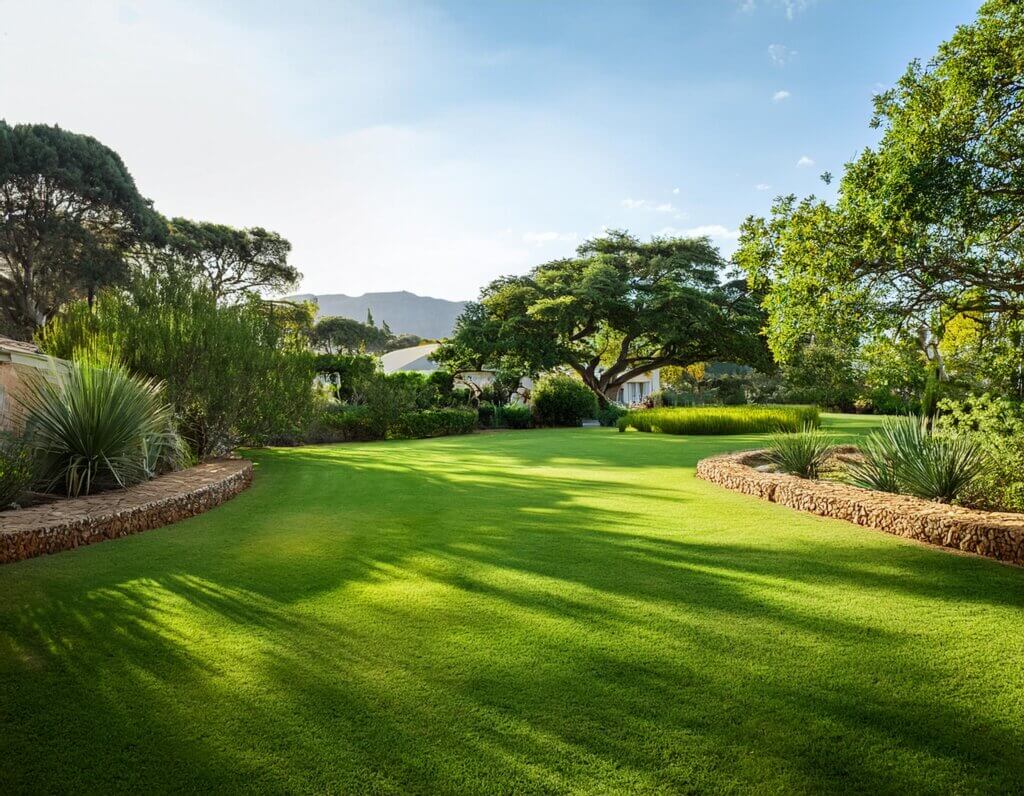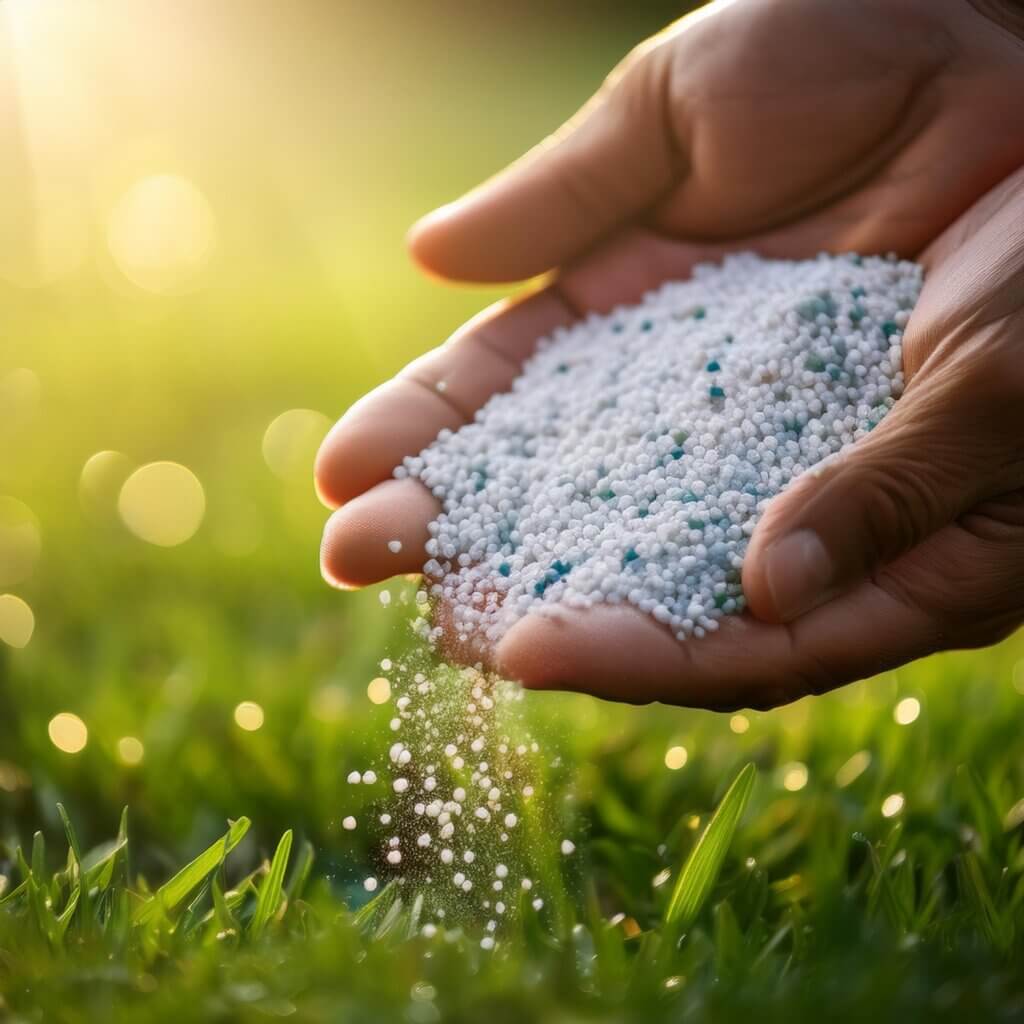A lush, green lawn is the pride of any garden. However, achieving and maintaining a beautiful lawn in South Africa’s diverse climates requires more than just regular watering and mowing. Lawn fertilizers are one of the essentials for a vibrant lawn. This comprehensive guide will take you through the types of lawn fertilizers best suited for South African conditions, how to use them effectively, and answers to common lawn care and lawn fertilizer questions.
Additionally, we will highlight some of the most popular lawn fertilizers available locally to help you choose the best one for your garden.
What is Lawn Fertilizer and Why is It Important?
Lawn fertilizers are specially formulated products designed to provide essential nutrients that promote the healthy growth of grass. These fertilizers typically contain three primary nutrients: Nitrogen (N), Phosphorus (P), and Potassium (K)—each serving a vital role in the lawn’s development.
- Nitrogen (N): Encourages lush, green growth by boosting chlorophyll production, which is essential for photosynthesis.
- Phosphorus (P): Strengthens root systems and is crucial for seedling development, ensuring that grass establishes strong, deep roots.
- Potassium (K): Enhances the overall health of the lawn, helping it withstand environmental stressors such as drought, disease, and temperature fluctuations.
These nutrients are vital because many soils, especially in urban areas or regions with poor-quality soils, lack sufficient levels of these elements to support continuous, healthy grass growth.
Lawn fertilizers are typically labeled with three numbers (e.g., 7:1:3) that indicate the ratio of these nutrients. In the example 7:1:3, the fertilizer contains:
- 7% Nitrogen (N): Promotes quick, lush green growth.
- 1% Phosphorus (P): Supports root development, which is especially important for new lawns.
- 3% Potassium (K): Improves the lawn’s resilience to stress.
These ratios help gardeners choose the right fertilizer based on their lawn’s specific needs, ensuring that grass stays healthy and vibrant year-round. In South Africa, lawn fertilizers come in various formulations.
Types of Lawn Fertilizers
1. Organic Fertilizers
Organic fertilizers are made from natural sources like compost, manure, and other decomposed plant material. They are known for their slow-release properties, which ensure a steady supply of nutrients over time. This makes them ideal for long-term lawn care.
Organic fertilizers not only feed your lawn but also improve soil structure by increasing microbial activity, leading to healthier soil that retains moisture and resists compaction.
For more information on the benefits of organic fertilizers, check out our detailed article on organic lawn care.
2. Chemical Fertilizers
Chemical or synthetic fertilizers are formulated to deliver nutrients quickly. These are particularly useful for lawns that need an immediate boost, such as after a period of neglect or during peak growing seasons. Chemical fertilizers come with specific NPK ratios that indicate the percentage of nitrogen, phosphorus, and potassium in the mix.
Common examples include 7:1:3 and 2:3:2 fertilizers, which are tailored to encourage healthy growth, greening, and robust root development. While effective, care must be taken to avoid over-application, as chemical fertilizers can burn grass if not applied correctly.
For a deeper dive into chemical vs. organic fertilizers, visit this resource.
3. Liquid Fertilizers
Liquid fertilizers are mixed with water and sprayed directly onto the lawn, allowing for quick absorption by grass blades. They are particularly useful during the dry months, as they can be easily combined with regular watering schedules. Liquid fertilizers are a great option when your lawn needs an instant boost of nutrients, making them ideal for fast greening and recovery.
4. Granular Fertilizers
Granular fertilizers come in both slow-release and quick-release forms. They are applied using a spreader, which ensures even coverage across the lawn. Slow-release granular fertilizers provide a steady stream of nutrients over several weeks or months, reducing the frequency of applications.
Quick-release granular fertilizers, on the other hand, provide an immediate nutrient boost but require more frequent applications.
For more on slow-release fertilizers, read our guide on macronutrients, micronutrients, and slow-release fertilizers.

How to Fertilize Your Lawn
Proper fertilizer application is important for a green and healthy lawn. Here’s a step-by-step guide on how to apply fertilizer:
1. Mowing Before Fertilizing
Always mow your lawn before applying fertilizer. This removes excess grass that can block the fertilizer from reaching the soil. Be sure to rake away any debris or grass clippings to ensure even distribution.
2. Using a Spreader or Sprayer
- For granular fertilizers, use a broadcast spreader to ensure an even application. Walk at a consistent pace to avoid over-fertilizing certain areas. Package instructions are the best guide.
- For liquid fertilizers, use a hose-end sprayer to apply evenly across the lawn. Follow the manufacturer’s instructions regarding dilution rates and coverage. Package instructions are the best guide.
3. Watering After Fertilizing
After applying fertilizer, water your lawn thoroughly. This helps the nutrients penetrate the soil and reduces the risk of fertilizer burn. Watering also activates the fertilizer, allowing your lawn to absorb the nutrients more effectively.
For tips on how to apply lawn dressing for an added layer of soil protection, read our article on how to apply lawn dressing.
When to Fertilize Your Lawn in South Africa
Timing is crucial when it comes to fertilizing. Applying fertilizer at the wrong time can result in wasted product or even damage to your lawn. Here’s a seasonal guide to help you fertilize at the right time:
Spring (September – November)
- Apply a balanced fertilizer such as 7:1:3 as your lawn begins its active growing phase.
- Spring is the best time to feed your lawn, as it will promote healthy growth and recovery from winter dormancy.
Summer (December – February)
- Use a nitrogen-rich fertilizer like LAN (Limestone Ammonium Nitrate) to maintain your lawn’s vibrant green colour through the hot summer months. Apply LAN from December to February for the best results.
- For more on summer lawn care, visit our summer tips.
Autumn (March – May)
- In autumn, focus on strengthening the root system by applying a phosphorus-heavy fertilizer like 2:3:2. This will prepare your lawn for the cooler months and encourage root growth.
Winter (June – August)
- Lawns in areas with mild winters can benefit from a slow-release fertilizer application during winter. This ensures that your lawn stays healthy and green until the next growing season.
For more information on seasonal care, check out our guide on autumn lawn care.

Popular South African Lawn Fertilizers
South Africa offers a wide range of lawn fertilizers, each suited to different needs and climates. Below is a list of some of the most popular fertilizers available locally, along with a brief description of each.
1. Protek Fertilizer Lawn Foliage (7:1:3)
- Description: Protek’s 7:1:3 formula is designed to promote vigorous green growth and strong root development. It’s a slow-release fertilizer, which means it provides a steady supply of nutrients to your lawn over time.
- Best For: General lawn care throughout the growing season, particularly if you want to maintain consistent growth and appearance.
- Buy now: Protek Fertilizer Lawn Foliage
2. Talborne Organics Vita Green (5:1:5)
- Description: Talborne Organics is an excellent choice for eco-conscious gardeners. This organic fertilizer offers balanced nutrients for both leafy growth and root development. Its slow-release nature ensures that nutrients are supplied steadily over time, making it ideal for sustainable lawn care.
- Best For: Organic lawn care with a focus on long-term soil and grass health. It’s particularly suited for eco-friendly gardens.
- Buy now: Talborne Organics Vita Green
3. Wonder Lawn and Leaf (7:1:3)
- Description: A well-balanced fertilizer perfect for year-round lawn care. Its formula is designed to encourage healthy leaf growth while strengthening roots, providing both immediate and long-term benefits.
- Best For: Routine lawn care, especially if you’re looking for a product that supports both growth and general health.
- Buy now: Wonder Lawn and Leaf
4. Wonder Deep Green LAN (17)
- Description: This high-nitrogen fertilizer is designed to provide a quick green-up for lawns that need an immediate boost. It’s particularly useful during the summer months when your lawn may experience stress from heat and drought.
- Best For: Fast greening and recovery during the warm summer months (December to February).
- Buy now: Wonder Deep Green LAN
5. Atlantic Fertilizers
- Description: Atlantic Fertilizers offers a range of products, but their lawn fertilizers are well-suited for promoting year-round growth. They contain a balanced mix of nitrogen, phosphorus, and potassium to encourage healthy growth while improving the soil’s nutrient content.
- Best For: Lawns that need both immediate and long-term nutrient support to remain healthy throughout the year.
- Buy now: Atlantic Fertilizers

Common Lawn Fertilizing Questions
Here are answers to some frequently asked questions about lawn fertilizing in South Africa:
1. When should I fertilize my lawn in South Africa?
The best time to start fertilizing is in early spring (September). Continue fertilizing every 4-6 weeks throughout the growing season, and adjust the type of fertilizer based on the season.
2. What is the best fertilizer for South African lawns?
A balanced fertilizer with a ratio of 7:1:3 is ideal for most lawns in South Africa. For eco-friendly gardeners, organic options like Talborne Organics’ Vita Green (5:1:5) are highly recommended.
3. Should I fertilize before or after mowing?
Always fertilize after mowing. This ensures that the fertilizer reaches the soil more effectively, as the grass is shorter and there is less thatch to block absorption.
4. When should I apply lawn dressing?
Lawn dressing should be applied in late spring or early autumn to improve soil structure. For more details, see our guide on how to apply lawn dressing.
5. What should I put on top of my grass?
A mixture of compost and sand is perfect for top-dressing. It improves soil structure, enhances drainage, and promotes healthy root growth.
Top Tips for a Healthy Lawn
Maintaining a lush, green lawn in South Africa requires a strategic approach to fertilizing, mowing, and watering. Here are some top tips to ensure your lawn stays in peak condition:
- Regular Fertilizing: Follow a seasonal schedule to apply the right type of fertilizer at the right time.
- Water Deeply, but Infrequently: Lawns need deep watering to encourage strong root growth. Water deeply once or twice a week rather than shallowly every day.
- Aerate Your Lawn: Compacted soil can prevent nutrients from reaching the roots. Aerate your lawn at least once a year to improve water and nutrient absorption.
- Use Lawn Dressing: Apply lawn dressing in spring or autumn to improve soil structure. Lawn dressing consists of a mix of topsoil, sand, and compost, which enriches the soil and promotes better grass growth.
For more tips on maintaining a healthy lawn, visit our complete lawn care guide.
Additional Resources
For further reading and resources, be sure to check out these helpful articles:



I’m in SA and I need it
Great! let us know if we can assist with anything.
Good eye opener.
Great Patley, let us know if we can help you with any aditional advice.